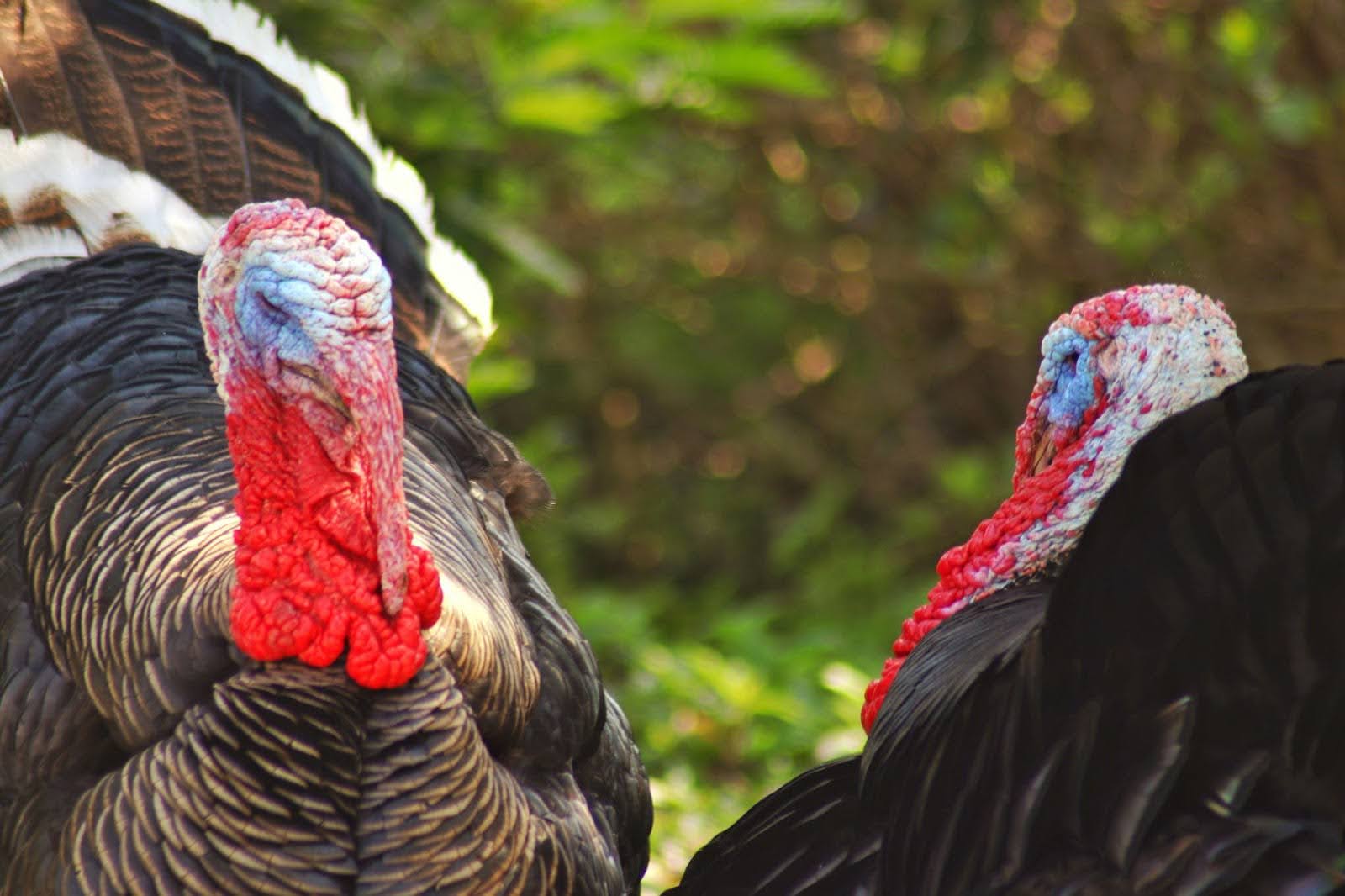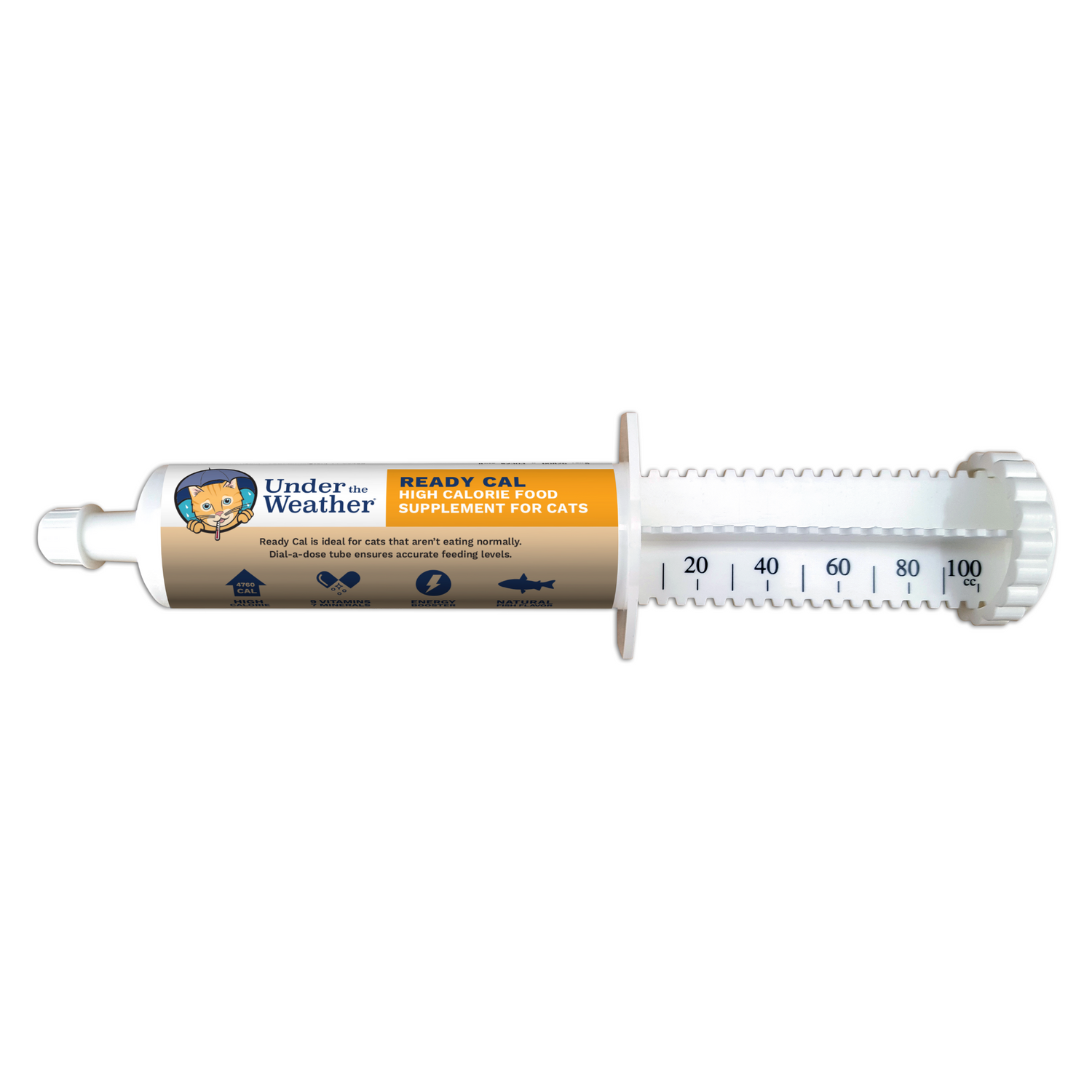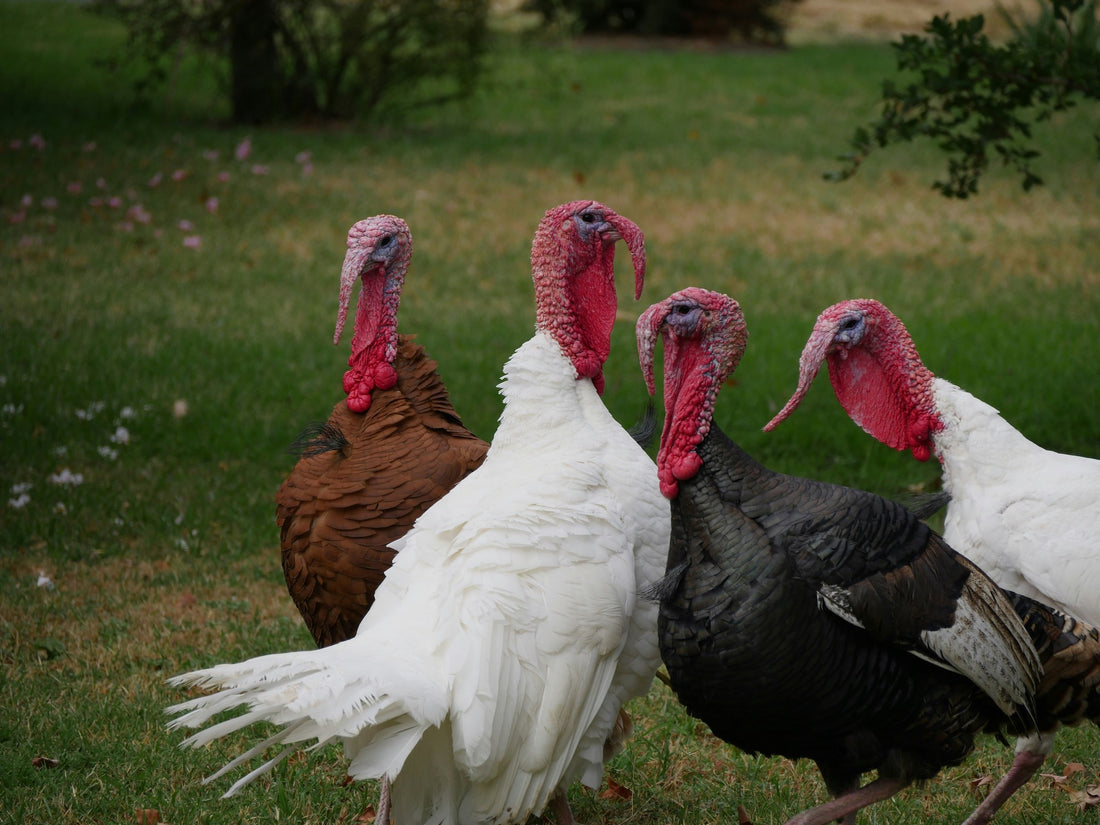Turkey necks are a popular treat among dog owners, but are they safe for canine consumption? In this article, we will explore the nutritional value of turkey necks, the potential risks associated with feeding them to dogs, proper preparation techniques, veterinarian opinions on the matter, and alternatives to consider. By the end of this article, the canine-friendly team at Under the Weather will help you gain a better understanding of whether turkey necks are a suitable treat for your furry friend.

Understanding the Nutritional Value of Turkey Necks
Turkey necks are packed with essential nutrients that can benefit your dog's overall health. One of the key benefits is their high protein content, which plays a crucial role in the canine diet.
When it comes to providing your furry friend with a balanced and nutritious diet, protein is a vital component. It serves as the building blocks for your dog's muscles, supporting their development, growth, and repair. Not only that, but protein also plays a significant role in maintaining a healthy immune system, helping your dog fight off infections and diseases. With turkey necks being a rich source of high-quality protein, you can ensure that your dog receives the necessary amino acids for their well-being.
The Role of Protein in Canine Diet
Protein is not just important for muscle health; it has numerous other benefits for your dog's overall well-being. It aids in the production of enzymes, hormones, and antibodies, which are essential for various bodily functions. Additionally, protein supports the formation of healthy skin, coat, and nails, keeping your dog looking and feeling their best.
Furthermore, protein plays a crucial role in digestion. It helps to break down food into smaller molecules, making it easier for your dog's body to absorb and utilize the nutrients. This ensures that your dog gets the most out of their meals, maximizing their nutritional intake.
Importance of Calcium for Dogs
In addition to protein, turkey necks are a great source of calcium. Calcium is a mineral that is vital for your dog's overall health, particularly when it comes to their bones and teeth.
When your dog consumes calcium, it is absorbed into their bloodstream and transported to their bones and teeth. Here, it plays a crucial role in maintaining their strength and structure. Adequate calcium intake is especially important for growing puppies, as it supports proper bone development and helps prevent skeletal abnormalities.
Calcium is not only essential for skeletal health but also plays a role in nerve function and blood clotting. It helps in transmitting nerve impulses, ensuring that your dog's muscles and organs function properly. Additionally, calcium is involved in the blood clotting process, preventing excessive bleeding in case of injury.
By including turkey necks in your dog's diet, you can help meet their calcium requirements and contribute to their overall well-being. However, it's important to note that the amount of calcium your dog needs may vary depending on their age, size, and specific health needs. Consulting with your veterinarian can help you determine the appropriate amount of turkey necks to include in their diet.
Potential Risks of Feeding Turkey Necks to Dogs
While turkey necks have their nutritional benefits, there are some risks associated with feeding them to dogs that you should be aware of.
When it comes to feeding turkey necks to your furry friend, it's important to consider the potential hazards that may arise. While they can provide a natural source of nutrients, there are a few factors that could pose a risk to your dog's health.
Choking Hazards and Digestive Blockages
One of the primary concerns with feeding turkey necks is the risk of choking. Turkey necks can be quite large and may pose a choking hazard, especially for smaller dogs or those prone to gulping their food. Dogs that are known to devour their meals without taking the time to properly chew their food are at an increased risk of choking on larger pieces of bone.
Ingesting large pieces of bone can also lead to digestive blockages, which require immediate veterinary attention. The bones can become lodged in the esophagus, stomach, or intestines, causing discomfort and potentially life-threatening complications. Be sure to monitor your dog carefully while they are consuming turkey necks and ensure they are chewing them thoroughly to minimize the risk of choking or blockages. This is not a treat they should be allowed to carry away for consumption.
Bacterial Contamination Concerns
Another potential risk is the presence of bacteria. Raw meat, such as turkey necks, can harbor harmful bacteria like Salmonella and E. coli, which can cause food poisoning in dogs. While dogs have a higher tolerance for certain bacteria than humans, it is still important to handle and store turkey necks properly to reduce the risk of bacterial contamination.
When handling raw turkey necks, it is essential to practice good hygiene. Wash your hands thoroughly before and after handling the meat to prevent the spread of bacteria. Additionally, ensure that any surfaces or utensils that come into contact with the raw meat are properly cleaned and sanitized.
Storing turkey necks in the refrigerator at the appropriate temperature is also crucial. Keeping them at a temperature below 40°F (4°C) helps inhibit bacterial growth and reduces the risk of contamination. It is recommended to store the turkey necks in sealed containers or bags to prevent any cross-contamination with other foods in the refrigerator.
While the risks associated with feeding turkey necks to dogs should not be taken lightly, they absolutely can still be included as part of a balanced diet with proper precautions for most dogs. Consulting with your veterinarian is always a good idea to ensure that you are making the best dietary choices for your furry companion. Remember that your dog’s favorite veterinarian is your best resource for information on your dog’s dietary, snack, and supplement needs.
Preparing Turkey Necks for Safe Consumption
To ensure the safety of feeding turkey necks to your dog, it is essential to follow proper cleaning and preparation techniques.
Turkey necks are a popular and nutritious treat for dogs. They are rich in protein and can provide a satisfying chewing experience. However, as explained, it is important to take certain precautions to ensure that the turkey necks are safe for your furry friend to consume and you know your dog best so you can be the judge of when or if to let your furry pal enjoy a turkey neck.
Proper Cleaning and Preparation Techniques
Before offering turkey necks to your dog, make sure to rinse them thoroughly under running water to remove any surface bacteria. This step is crucial in preventing the transmission of harmful pathogens that may be present on the raw meat.
Once the turkey necks are clean, it is recommended to trim any excess fat or skin. While fat is an important part of a dog's diet, too much can lead to digestive issues. Trimming the fat also helps to reduce the calorie content of the treat, making it suitable for dogs on a weight management plan.
After trimming, it is advisable to cut the turkey necks into smaller, manageable pieces based on your dog's size. This ensures that your dog can safely chew and swallow the treat without any risk of choking or blockage.
Cooking vs. Raw: Which is Safer?
When it comes to turkey necks, cooking them is generally considered safer than feeding them raw. Cooking helps to kill harmful bacteria and reduces the risk of intestinal blockages due to bone splintering.
Boiling or baking the turkey necks until they are fully cooked and no longer pink inside is recommended. Cooking the turkey necks thoroughly ensures that any potential pathogens, such as salmonella or E. coli, are destroyed, making the treat safe for your dog to enjoy.
It is important to note that some dog owners prefer to feed their pets raw food, following a raw diet or BARF (Biologically Appropriate Raw Food) diet. While this is a personal choice, it is crucial to be aware of the potential risks associated with feeding raw turkey necks.
Raw turkey necks may contain harmful bacteria that can cause foodborne illnesses in dogs and humans. Additionally, the bones in raw turkey necks can splinter and pose a choking hazard or cause internal injuries if not chewed properly.
If you decide to feed your dog raw turkey necks, it is essential to source them from a reputable supplier that follows strict quality control measures. It is also recommended to consult with a veterinarian or a canine nutritionist to ensure that your dog's diet is balanced and meets their specific nutritional needs.
Ultimately, whether you choose to feed your dog cooked or raw turkey necks, it is important to prioritize their safety and well-being. By following proper cleaning and preparation techniques, you can enjoy the benefits of this tasty and nutritious treat while minimizing any potential risks.
Veterinarian Opinions on Turkey Necks as Dog Treats
What do veterinarians think about feeding turkey necks to dogs? Let's explore their viewpoints.
When it comes to the topic of feeding turkey necks to dogs, veterinarians have varying opinions. Some may support the idea of incorporating turkey necks into a dog's diet, as long as they are properly prepared and supervised. On the other hand, there are veterinarians who advise against feeding turkey necks altogether due to the potential risks involved.
One of the main concerns raised by veterinarians who are against feeding turkey necks is the potential for choking or blockage. Turkey necks can be quite large and may pose a choking hazard, especially for smaller dogs or those who tend to gulp their food without chewing properly. Additionally, the bones in turkey necks can splinter and cause blockages in the digestive tract, which can be extremely dangerous and even require surgical intervention.
However, veterinarians who support feeding turkey necks argue that when prepared correctly, they can provide a range of benefits for dogs. Turkey necks are a natural source of glucosamine and chondroitin, which are essential for joint health. They also contain high levels of protein, vitamins, and minerals that can contribute to a well-balanced diet for dogs.
Of course, every dog is unique, and what may be suitable for one dog may not be suitable for another. Before introducing turkey necks or any significant dietary changes to your dog's routine, it is crucial to consult with your veterinarian. They will be able to assess your dog's individual needs, taking into consideration factors such as age, breed, size, and overall health.

When to Consult a Vet Before Changing Your Dog's Diet
If you are considering incorporating turkey necks into your dog's diet, consult your veterinarian beforehand, especially if your dog has any underlying health conditions or dietary restrictions. Your vet can provide personalized advice based on your dog's specific needs.
During the consultation, your veterinarian will consider various factors to determine whether turkey necks are suitable for your dog. They may assess your dog's current diet, overall health, and any specific health concerns or conditions. For example, if your dog has a history of gastrointestinal issues or is prone to allergies, your vet may recommend alternative treats or dietary options.
Additionally, your veterinarian may also discuss the proper preparation and serving guidelines for turkey necks. It is crucial to ensure that the turkey necks are thoroughly cooked to eliminate any potential bacteria or parasites that could be harmful to your dog's health. Your vet may provide instructions on cooking methods and portion sizes to ensure your dog's safety.
Remember, the well-being of your furry friend should always be the top priority. While turkey necks may offer certain benefits, it is essential to weigh the potential risks and consult with a professional before making any dietary changes. Your veterinarian is the best resource to provide you with accurate and personalized advice regarding your dog's diet.
Alternatives to Turkey Necks for Dogs
If turkey necks are not suitable for your dog or you prefer to explore other options, here are some safe alternatives to consider:
Other Safe Treats for Canine Consumption
There are numerous dog treats available that are safe and nutritious. Look for treats made from high-quality ingredients, such as lean meats, vegetables, or fruits. Some popular options include freeze-dried liver treats, dental chews, and natural jerky treats.
Commercially Available Dog Treats and Their Benefits
Commercially available dog treats are specifically formulated to meet the nutritional needs of dogs. They are typically tested for safety and can be a convenient and reliable option. Look for treats that are free from artificial additives, preservatives, and fillers.
Conclusion
All in all, turkey necks can certainly be a nutritious treat for dogs when prepared and fed with caution. However, carefully consider the potential risks, such as choking hazards, digestive blockages, and bacterial contamination. Always consult with your veterinarian before introducing turkey necks or any significant dietary changes to your dog's routine. If turkey necks are not suitable, there are plenty of other safe and nutritious treat options available on the market. Prioritize your dog's health and well-being by making informed choices about their diet and treats.
Every Sale Supports a Shelter Pet. Learn More.
Created in Vermont. Learn More.
Written by: Min Lee
If you suspect your pet is sick, call your vet immediately. For health-related questions, always consult your veterinarian, as they have examined your pet, know the pet's health history, and can make the best recommendations for your pet.






